The complete list of interesting facts about Alex Katz is longer than a Russian gangster’s rap sheet. We’ve combed through and selected the best facts about the son of a Russian immigrant. Some are short and quirky; others are central to the arc of his life. Together, they sketch a fascinating life spanning almost a century; the life of one of America’s most respected living artists.

Gray Ribbon,1990
The Basic Facts About Alex Katz
Some people want to paint the world red, but Katz wants to paint it flat. His work is two-dimensional, simple, cool, and emotionless. He sees the world, and he paints it. Just the surface of things. Just immediacy and simplicity and style.
At the time, this approach to painting was make-or-break. After ten years of searching for his style and throwing away over a thousand canvases, Alex Katz landed on his breed of realism when everyone else was clamoring to be abstract expressionists, including notables like Pollock, Kooning, and Rothko. In fact, one of the first things his wife said to him was, “I thought every intelligent painter would be painting abstracts.”
The rest, as they say, is history. Once Katz committed to his style and the Italian babe from the Bronx, he set himself on a course that would bring them both great notoriety. Ada is the subject of over 250 paintings, and Alex once quipped that she’s like Picasso’s Dora Maar, only with a better neck and shoulders.
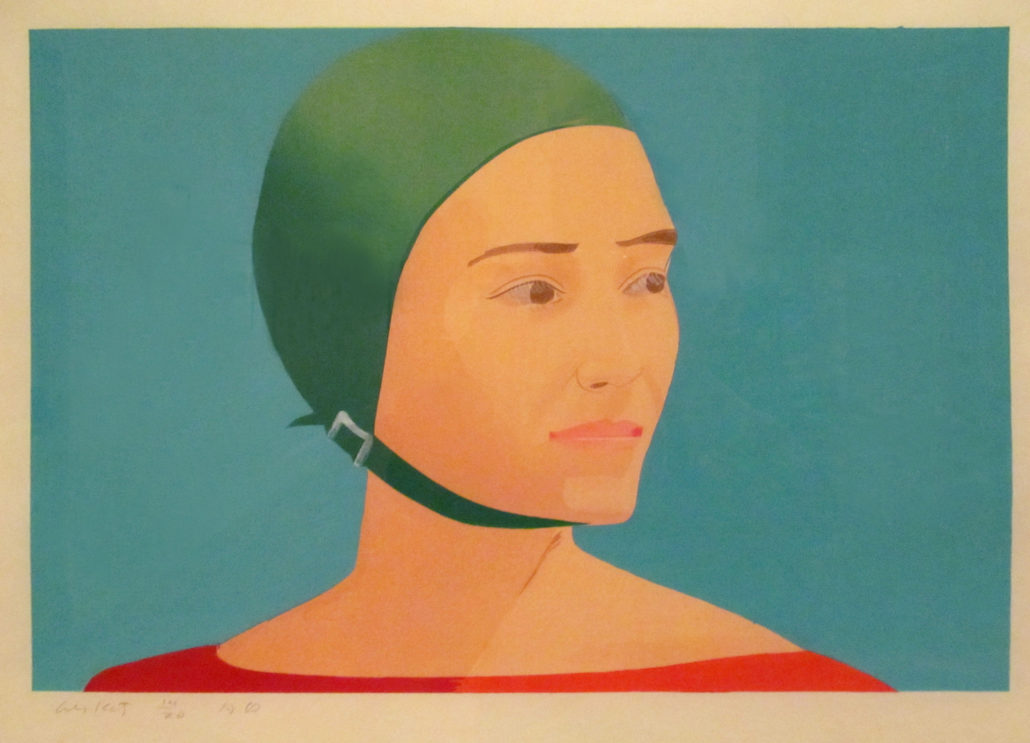
Ada Sat For Paintings Over 250 Times
Interesting Facts About Alex Katz
1. He paints like lightning.
Over the decades, he’s honed the practice of painting faster than he thinks. Or at least he paints quicker than his conscious mind can think. Like Keith Haring and many other Pop artists, his paintbrush flies at a frenzied pace, which allows the artist to enter a state of deep flow. With all mental stops removed, the paintings begin to take on a life of their own. They end up in different places than the artist imagined. It’s undoubtedly one of the elements that separate art from not-quite-art.
You could even say it’s his primary form of liberation. He does.
“To paint fast is to start with one side of your mind, let go and let the other side do it.”
2. Alex Katz is a creature of diehard habits.
It’s well-known that Katz has lived in the same Soho loft for nearly fifty years. He understands the meaning of the word “gentrification” better than any griping Millenial tenant of Williamsburg across the East River. In an interview, he reminisced about the early years.
“It was exciting in the beginning. Soho was an industrial slum and there were fires all the time. Because of the fires it was called Hell’s Hundred Acres. In the 60s and 70s I couldn’t get cabs to drive me here or friends to come down and visit. It wasn’t safe.”
Even when he breaks one routine, he merely enters another. Every year from early June to mid-September, he and his paramour Ada live in their summer home, a 19th-century clapboard farmhouse in Maine. They have made this return-to-the-wilderness trek religiously since the sixties. He explains how vital routine is to his process.
“I don’t know what else I would do. My life is all about habits. Working and thinking about working is a habit. My work is in stages. At one point in life I tried painting 6 or 8 hours a day, but at the end of that year I just threw everything out.”
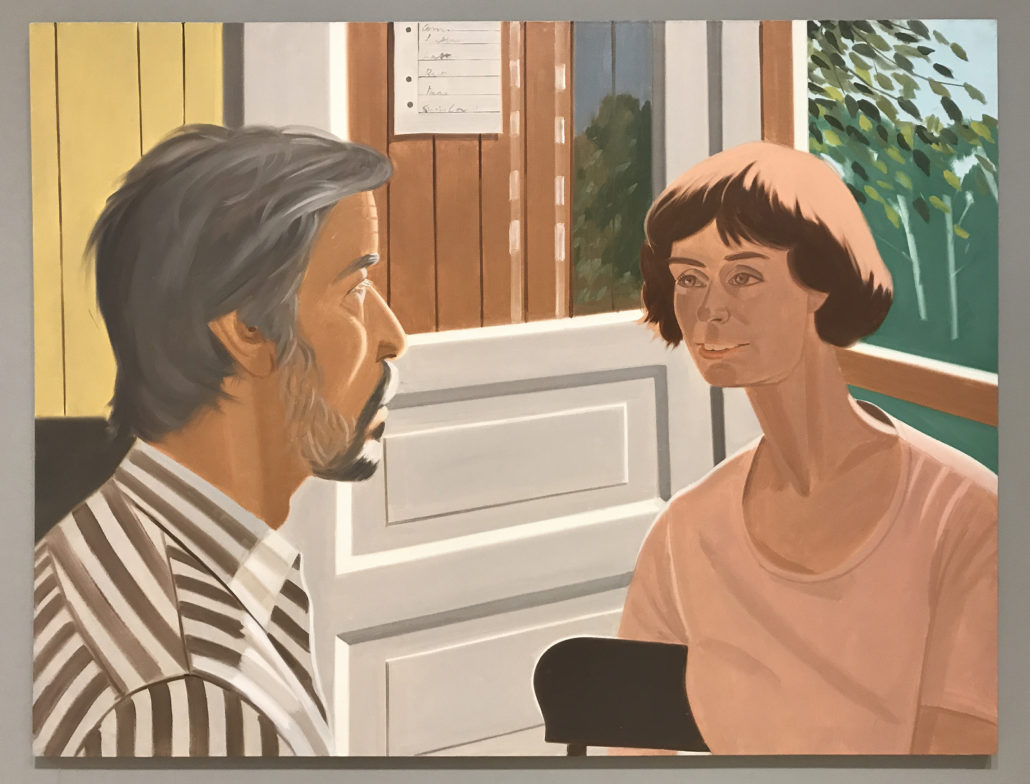
Yvonne Jacquette and Rudy Burckhardt, 1977.
3. Early in life, he was a true-blue renegade.
He lived illegally in New York for 15 years, squatting in abandoned buildings without even hot water. He was part of a group of social fugitives, who always seemed on the verge of getting kicked out. Eventually, he left the squatter life, but only because he was part of an art collective that bought a property together, which granted him lots of space to think and work.
As a young gun, he couldn’t have cared less about politics. There’s an anecdote that he agreed to “sell” his vote to his mother for two dollars.
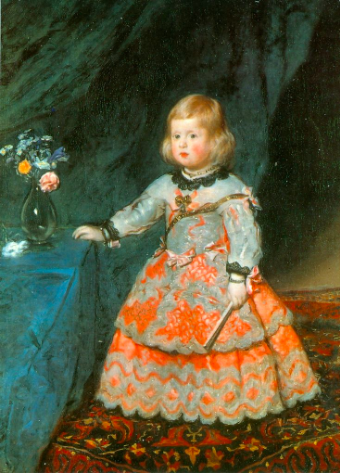
The Infanta Margarita Teresa of Spain in a Red Dress by Diego Velázquez
4. A Velázquez painting helped inspire his style.
When he was a twenty-something, Katz visited an exhibition at the Metropolitan Museum and viewed a portrait of a Hapsburg infant. The experience proved pivotal. He recalls the moment and its effect on his life:
“It was nothing—so simple! Something could be so simple and so much. Just a green background, a little girl—everything was perfect. There’s no story line. It’s immediate. He painted directly. He saw it, he painted it.”
5. He collaborated with many other artists, especially poets.
In the fifties and sixties, many New York poets showed concern with writing about the experiences of everyday life. This state of affairs synced up perfectly with Katz’s approach to the canvas. He and Ada spent much of their time socializing with poets, and naturally a great deal of collaboration sprouted from the relationships.
- With the poet John Ashbery, he helped create”Fragment” in 1966 and “Coma Berenices” in 2005.
- Collaborating with his son Vincent Katz, he helped create “A Tremor in the Morning” and “Swimming Home.”
- With Bill Berkson, he made 25 etchings to complement 28 poems for the Arion Press edition of Gloria.
- In conjunction with Robert Creeley, he helped produce “Edges” and “Ligeia: A Libretto.”
- With Kenneth Koch, he made “Interlocking Lives.”
- In 1962, Harper’s Bazaar incorporated numerous wooden cutouts by Katz for a four-page summer fashion spread.
6. His projects often cross over into the fashion world.
Katz’s father was all about style and stylized himself as a Russian playboy. No doubt this sartorial flair extended to Alex, whose fashion sense is often discussed right behind his art. In fact, he used to own seven different zoot suits.
He’s also created artwork for W magazine and Madison avenue windowfronts. Supermodels like Christy Turlington and Kate Moss have been portrait subjects. The man has even modeled for J. Crew and helped develop a clothing line at H & M.

Lotte Museum of ART: Alex Katz
7. Alex Katz isn’t a fan of Impressionist paintings.
He calls them “happy lies.”
8. He’s a fastidious neat freak.
The stereotypical portrait of the artist in their studio involves paint spatter everywhere—on the canvas, sure, but also finding its way to the floor, clothing, and all over the artist’s hands. Not so with Katz.
Not only does he wear gloves while painting, those who visit his studios often note that paint doesn’t stay anywhere except on the canvas. Everything gets thoroughly cleaned. “I don’t like mess,” says Katz. “I don’t like paint on my clothes or my hands or my furniture.”
9. He’s a big-time fitness buff.
No matter where he is, Katz completes a fitness routine every morning. He typically finishes off 300 push-ups, a couple-hundred sit-ups, a 300-yard jog, and a 100-yard sprint before breakfast. In fact, he’s even mentioned that his biggest regret is quitting track and field during high school.
When in Maine, he kicks his fitness up a notch, sometimes exercising for four hours a day. Rotating through biking, swimming, and running, he keeps his body in peak shape. As rumor has it, he also has a quick tongue and likes to challenge twenty-somethings to the occasional sprint.
Of course, now that he’s over 90 years old, these routines may lessen in intensity. But it’s a safe bet that Katz will be painting and exercising to the end of his days.
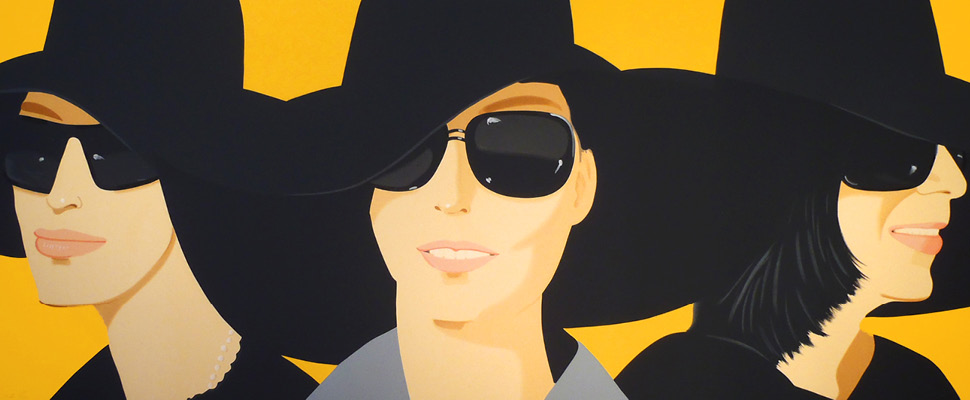
Black Hats IV, 2012 (Screenprint)
10. He’s a history buff, especially concerning Genghis Khan.
In an interview with David Salle, Katz explains what he loves about military history and Khan in particular:
“Oh! Many things: the social attitudes, the problem-solving. Genghis Khan is a very pragmatic mind. It’s fascinating, his solutions to things. He was getting a lot of people saying terrible things about him, and he found that the Chinese had printing presses, so he had it printed and sent in advance to wherever he was going.”
That sums up our most interesting facts about Alex Katz. You can also take the same journey for contemporary maverick Keith Haring or champion of the Ben-Day dot, Roy Lichtenstein.

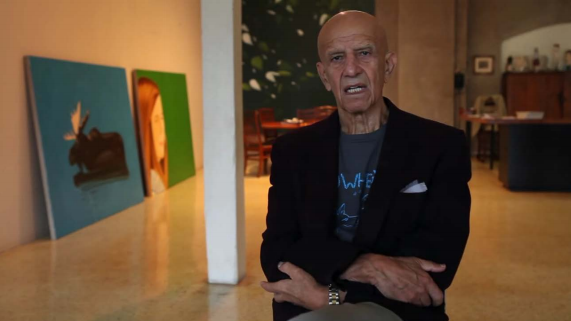


Leave a Reply
Want to join the discussion?Feel free to contribute!